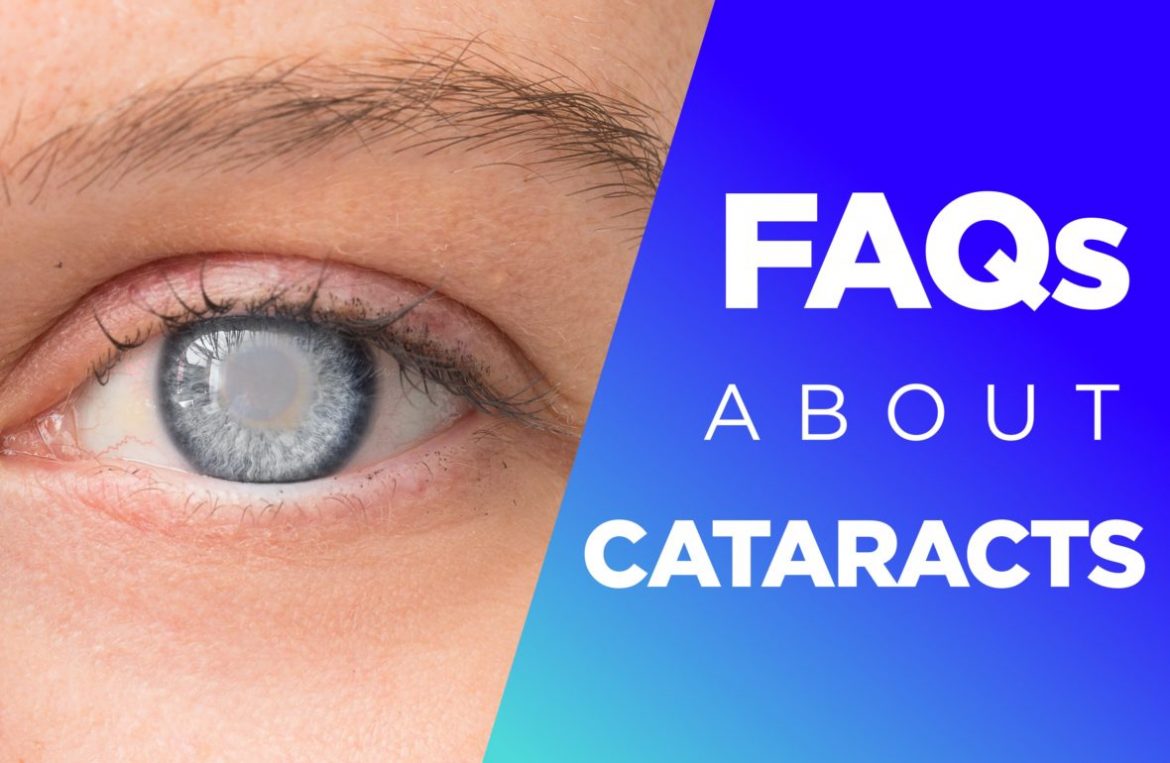![]()
Are you becoming more sensitive to light and challenged by glare? Experiencing changes in your vision?
You may be developing cataracts. You’re not alone. The National Eye Institute estimates 50 million Americans will be living with cataracts by 2050.
Following are frequently asked questions about cataracts, and of course, the answers.
What is a cataract?
A cataract is a clouding of the clear lens inside your eye.
Like a camera lens, the lens in your eye is a clear window that brings near objects into focus. Your ability to focus becomes less effective as you age and begin to develop presbyopia.
Your lenses are made up of water and proteins. The proteins are arranged in an orderly fashion to allow light to pass through. If a cataract develops, the proteins clump together, blocking the transfer of light, which makes your vision blurry.
Furthermore, ultraviolet (UV) light exposure gives your lens a yellow tinge. Over time, this makes even vibrant colors seem dull.
Does your eye become sore when a cataract develops?
As a cataract forms, the effect is like looking through a window that has been smeared with petroleum jelly. Less light gets into your eye. The light which gets through is scattered around—rather than focusing on one point. Cataracts do not usually hurt your eyes although sometimes the eyestrain you experience may give you some discomfort.
What are the signs and symptoms of cataracts?
- Blurred vision
- Frequent changes in your prescription
- Glare (sensitivity to light)
- Halos (bright circles surrounding a light)
- Difficulty seeing at night
- Colors appear faded
- Ghosting (seeing a double image with one eye open)
What causes cataracts to develop?
The most commonly diagnosed cataracts are age-related. Along with age, certain behaviors can also put you at higher risk for developing cataracts: sun exposure without eye protection, smoking, diabetes, injury, steroid medications, and exposure to radiation.
Most cataracts develop slowly and don’t initially interfere with your vision. Over time, cataracts will change your glasses prescription. You may experience glare and halos.
Cataracts can develop in one eye or both eyes but do not spread from one eye to the other.
Why does your prescription change?
Changes in vision can be very gradual in age-related cataracts. The cloudy lens modifies the focusing power of your eye. The three most common age-related cataracts are:
Nuclear cataract
The cataract develops in the center of your lens. You may require a near-sighted shift in your prescription over time.
Cortical cataract
This cataract develops in the outer edges of your lens and causes glare. It often induces astigmatism, which will blur your vision if it is not corrected with eyeglasses or contacts.
Posterior subcapsular cataract
Similar to a nuclear cataract, this type of cataract will cause a near-sighted shift in your prescription. It forms at the back of your lens. Colors seem dull and you often develop light sensitivity.
How do you manage your symptoms?
While prescription glasses can’t remove the cataract, the right prescription can help with symptoms of blurred vision and glare. There are some steps you can take to manage your symptoms.
- Always keep your prescription up-to-date
Along with increasing clarity, an accurate glasses prescription will reduce the amount of light scattering around in your eye. - Improve your lighting
Improved lighting will reduce the glare you experience. Ensure the light is shining from behind you and not directly in your eyes. - Wear anti-glare sunglasses
A UV filter and at least a 70% tint in your sunglasses will diminish glare when you’re outside. Also, consider polarized or photochromic lenses.
Can you prevent cataracts from progressing?
You cannot prevent cataracts from forming, however, some simple strategies may minimize progression:
- Reduce exposure to sunlight by wearing UV-blocking eyeglasses.
- Give-up smoking.
- Increase antioxidant vitamins either through your diet or by taking nutritional supplements.
- Manage coexisting conditions such as diabetes.
When should you seek treatment?
Regular visits to your eye doctor and an updated prescription will help minimize cataract symptoms. Eventually, an updated prescription will no longer improve your vision and your doctor may recommend cataract surgery.
What should you expect following cataract surgery?
With cataract surgery, your lens is replaced with an artificial lens. Following surgery, your prescription will change. You will need to see your eye doctor for a final evaluation and new prescription—approximately one month after surgery.
Will you require glasses after surgery?
Many people continue to wear multifocal eyeglasses after surgery. Alternatively, you could just wear reading glasses but you may become frustrated taking your glasses on and off for near and far tasks.
You will require quality sunglasses. The majority of artificial lenses have a UV filter but will not protect the front of your eye or surrounding skin from harmful UV damage. Although cataracts will not develop again in your eyes, wearing a UV-blocking pair of sunglasses when outdoors remains essential for your eye health.

